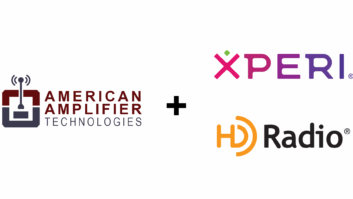Story has been updated with additional information.
The developer of HD Radio has something to say when it comes to the performance of receivers and efficient uses of wireless spectrum — namely that any one-size-fits-all approach to receiver performance is not only impractical but is inevitably doomed to fail.
Among other things, Xperi also would like the FCC to adopt a minimum product requirement that includes digital radio capabilities for car and portable AM/FM radio products.
In a filing to the Federal Communications Commission, Xperi Holding Corp. said that in the 20-plus years it has been working to develop, test and deploy digital radio technologies, it has gained significant expertise in terms of how effective system design can result in effective use of spectrum.
These lessons could prove valuable as the commission explores new opportunities for how best to use the nation’s spectrum resources. While Xperi said it wholeheartedly agrees with the FCC’s assessment that improvements in receiver performance will help make spectrum management more efficient, any effort to facilitate new opportunities for that spectrum must also include preserving existing spectrum and the users who currently rely on it.
“Fortunately, it is possible to both protect existing spectrum uses and also improve receiver interference immunity performance,” Xperi said in its filing. “But any approach to improving receiver performance must begin with a recognition that not all technologies operate in the same way and different spectrum bands experience different interference concerns.”
As a result, it said a one-size-fits-all approach to receiver performance is impractical and will inevitably fail.
[See Our Business and Law Page]
The company reminded the commission that the Notice of Inquiry (NOI) released in April about spectrum use and receiver performance fails to consider other factors that could raise the level of the noise floor, particularly in the AM band, including unintentional radiators and LED lighting that degrades reception in the FM band.
Instead, Xperi said the FCC needs to adopt an industry-specific approach to receiver performance, because what works for aviation equipment — which is the focus of many comments to the commission’s NOI — may not work for broadcast or 5G. “Establishing regulations that cover every unique use within every unique industry is an impossible task,” the company said. Instead, the commission should establish guideposts for each industry to address through individual performance metrics and test programs.
The company proposed several ideas for the commission to consider, including encouraging receiver design specs on an industry-specific basis. The company also reminded the commission that transmitter design plays a significant role in improving receiver performance. “Addressing receiver performance in a vacuum ignores the role of transmitter performance and design,” the company said.
Xperi also said the FCC must keep in mind the significant impact that continues to come from unintentional radiators as the RF landscape shifts, saying that new sources of unintentional radiation are threatening both AM and FM quality of service.
Industry-led guidelines are the best way to assess receiver performance, the company said, adding that the commission should look to the rollout of the IBOC radio standard and HD Radio technology for real-world examples of how an industry-based approach produced helpful lessons.
“With increasing noise and interference in the AM/FM bands, the digital IBOC modulation used in the HD Radio system provides a significant level of noise immunity,” the company said.
“As more radio stations convert to digital operations, a minimum product requirement including digital radio capabilities for car and portable AM/FM radio products will ensure continued efficient use of the AM/FM band and the services they provide.”
The comments were filed as part of the FCC’s NOI on how best to promote efficient use of the spectrum through improved receivers. Comments from Collins Aerospace, the CTIA, AT&T and others are part of Docket Number 22-137 within the FCC’s ECFS database.







